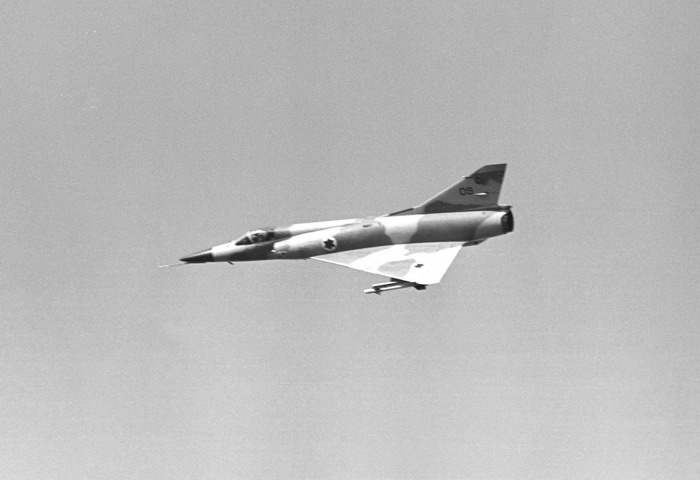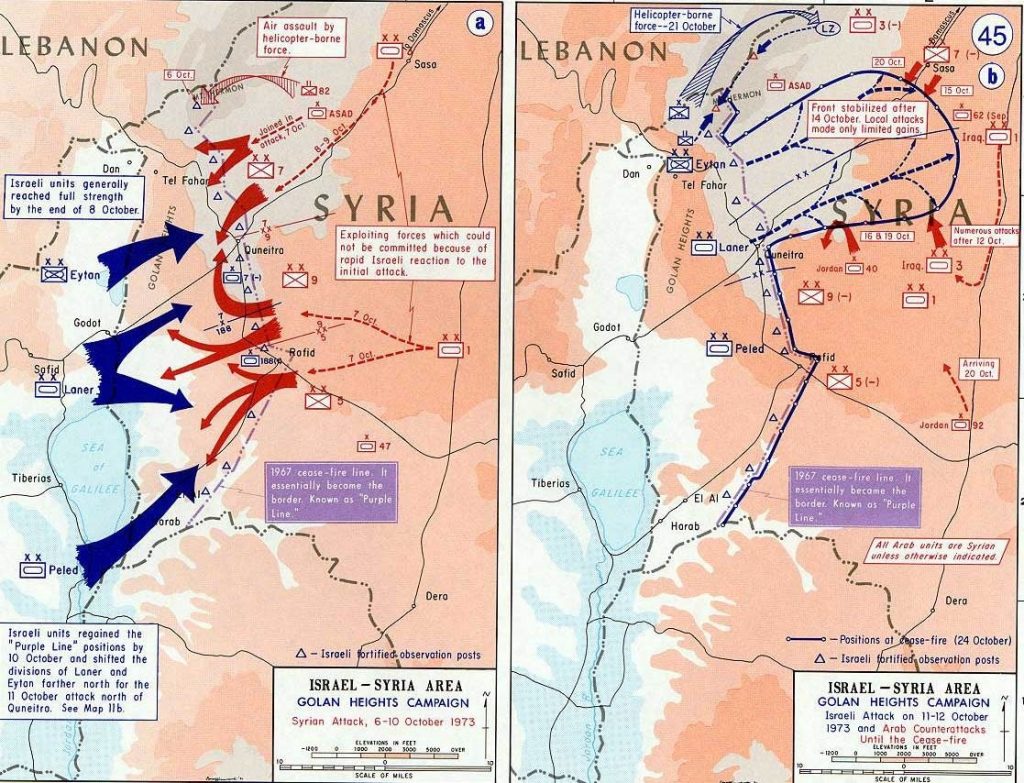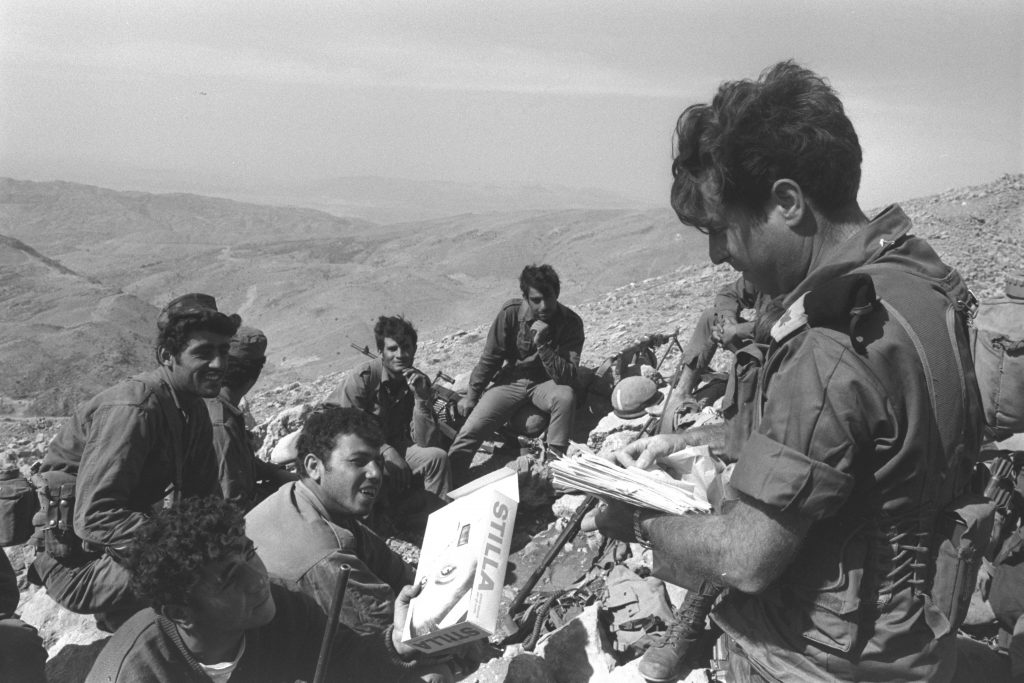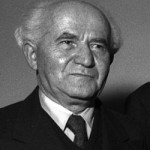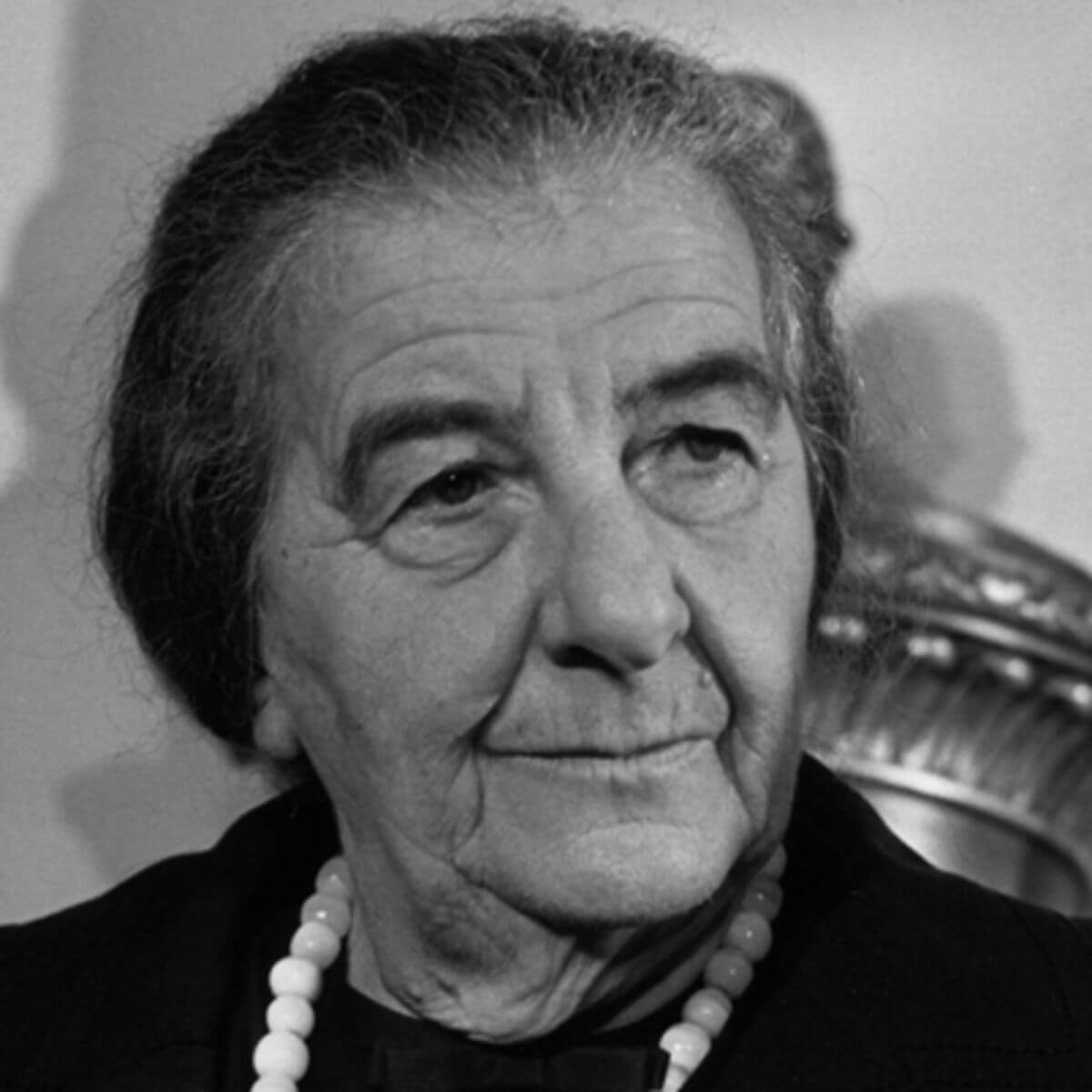.1 | 10 October: The End of the Beginning
The fifth day of the war was to a large extent the end of its first stage – containment of the Arab attack and the battle for the existence of Israel, with all the uncertainty and fears that accompanied it. By the morning of 10 October, IDF forces had already succeeded in driving the Syrian forces almost completely back to the ceasefire line, and here and there even over it, except on Mt. Hermon. Syrian forces were no longer directly threatening Israel’s territory. In the south the situation was static, with the IDF forces deployed, more or less, on a north to south axis at a distance of 4 – 12 kilometres from the Canal, exchanging intermittent fire with the Egyptians. The atmosphere in the prime minister’s bureau had greatly improved. After the stabilization at the fronts and the American promises to supply arms, the immediate danger to the state, which Golda later defined in these words: “I am saying this in full awareness of its significance – we never faced so grave a danger in 1948”, seemed to have passed. From now on, the government’s activities focused on ensuring conditions that would allow the IDF to conclude the war in the best possible position in preparation for the anticipated negotiations.
The cautious optimism in the bureau was also encouraged by what seemed to be a positive change in the US position on arms supply. The telegrams that Golda read on arriving caused her the greatest satisfaction since the outbreak of the war. She composed a telegram to Dinitz with an expression of deep appreciation to Kissinger for his role, and an emotional message of thanks to “Edward” (Nixon) for his decision: “I knew that in this hour of dire need to Israel I could turn to you and count on your deep sympathy and understanding” (See: Telegram No. VL/819 )
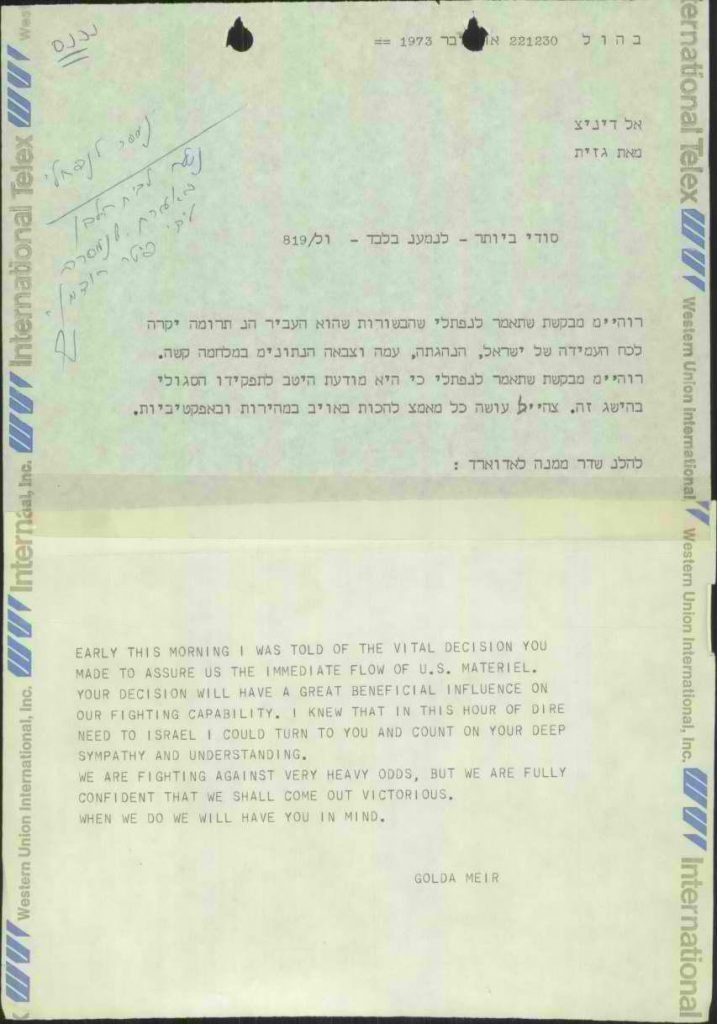
Message from Golda Meir to President Nixon, 11 October 1973. File A 4996/3, p. 200
At this point, policy makers in Israel were misled by Kissinger’s presentation of the American position, and did not understand that although he was attempting to help them to some extent, he was still trying to maintain the policy of non-intervention adopted at the beginning of the war (See: “Issues of Arms Procurement and the Airlift”, Gazit’s Summary no. 5, File A 7023/1)).
In a consultation with Golda at 09:35, Dayan complained that OC Northern Command, Maj. General “Haka” Yizhak Hofi, “is not aggressive enough in the north. They’re tired”. He proposed that Elazar put pressure on the northern command to step up the attacks on the Syrians. In addition, Dayan expressed concern at the state of the air force, whose commander, Benny Peled, judged that within three or four days it would find it difficult to function at all. The mood of the meeting was that steps should be taken to postpone a ceasefire resolution at the Security Council based on the present positions of the forces for as long as possible (For the full minutes of the consultation in Hebrew, see: Cabinet Document No. 16).
Immediately afterwards the government met, and the American promises and the improved situation on the fronts, apparently based on truthful reports, created a distinct improvement in the mood. Golda first announced the news from Washington, which she defined as “great news. All in all, it seems to me that the skies are brighter this morning”. She added: “The war, unfortunately, is not over; but there is an almost revolutionary difference in comparison to what it was several days ago. The change is real, but the war is still with us, and it will take days before we can say that it is behind us”. The deputy COGS, Maj. General Israel Tal, reported on a state of collapse in the Syrian army, also in morale, and therefore: “The situation is good, compared with the situation of near despair that reigned earlier”. He also reported on some improvement on the Egyptian front. However the Egyptian army was intact and its morale was high. In reply to a question, Tal refuted the rumours of atrocities by Egyptian commandos on male and female IDF soldiers. During the meeting the government decided to establish a civilian centre for labour volunteers, and since the festival of Succot (Tabernacles) began that day, they adjourned with greetings of “Happy holiday” (For the full minutes of the meeting, see: Government Document No. 12).
Due to the holiday Golda decided to take action to improve the public’s mood, by breaking her self-imposed silence since the first day of the war. From an improvised studio in the headquarters of the Israel Journalists’ Association, Beit Sokolov, Golda told television viewers that the Syrians had been pushed back from the whole of the Golan Heights and there was an improvement in the situation in the Suez Canal sector. In a statement and in reply to journalists’ questions, she tried to disperse any illusions that the war would be short, like the wars that Israel had been accustomed to, but she was adamant in her belief that it would be victorious. She prepared the nation for the heavy price that it would have to pay in casualties and concluded with holiday wishes. However, in contrast to the positive message that she tried to convey, Golda looked haggard and sad during the broadcast, and did not contribute to improving the atmosphere (See: the prime minister’s appearance on television).
The positive change in the situation on the fronts was overshadowed by the news that the USSR had begun to use cargo planes to fly great amounts of equipment, especially anti-aircraft missiles, to Syria. It was feared that this was the beginning of a Soviet airlift, which would put the shattered Syrian army back on its feet. During consultations, Allon proposed to bomb the airport at Aleppo, which was both a civilian and military airfield, in order to deter the Soviet transport planes and prevent them from landing. Golda Meir hesitated because she feared hitting Russian planes and the reaction by the USSR, and possibly even the US. On the other hand, the news that the planes were already in the air, and apparently contained a supply of ground-to-air missiles, worried her greatly. In the end, Golda decided to approve bombing the airfield after sending the Americans a message explaining the decision. The discussion continued without her, and the bombing was approved conclusively. In a telegram to Dinitz he was instructed to convey the background to Kissinger, but only after the operation had already been carried out. Gazit would give him a coded telephone message: “Eliezer has left the hospital” (See Telegram No. VL/822). At 19:25 the bureau was informed that a successful attack had been made on the airfield. The runways were damaged, not the planes; however, the head of the Mossad related that the air force had apparently also hit one Russian Antonov plane.

